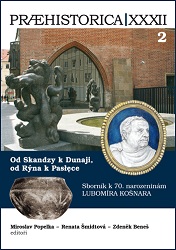Vývoj bádání nad tříděním mečů z 2. poloviny 8. až přelomu 10. a 11. století
Development of Research on Typological Classification of Swords Dating from the Second Half of the 8th Century to the Turn of the 11th Century
Author(s): Jiři KoštaSubject(s): Archaeology, Cultural history, 6th to 12th Centuries
Published by: Univerzita Karlova v Praze, Nakladatelství Karolinum
Keywords: sword; typology; Early Middle Ages; Europe;
Summary/Abstract: Typology is one of the traditional methods of archaeological work; it still plays a key role in many areas of archaeology. Early medieval European double-edged swords are undoubtedly artefacts, whose typological classification is cardinally seminal. Swords are a bridging element between the contents of early medieval archaeological cultures of Northern, Western, Central and Eastern Europe. At the same time, swords represent a category of artefacts that have undergone dynamic morphological evolution during the Early Middle Ages. Thanks to their complex design and production technology, the typological classification of swords can be approached from different angles separately (e.g. based on the criteria of shape, on construction, or decoration, etc.) with consequent synthesis of results. The tradition of research on typological classification of early medieval swords in Europe is long. The aim of this paper is a brief introduction, summary and evaluation of its results.
Journal: Praehistorica
- Issue Year: 32/2014
- Issue No: 2
- Page Range: 233-252
- Page Count: 20
- Language: Czech

